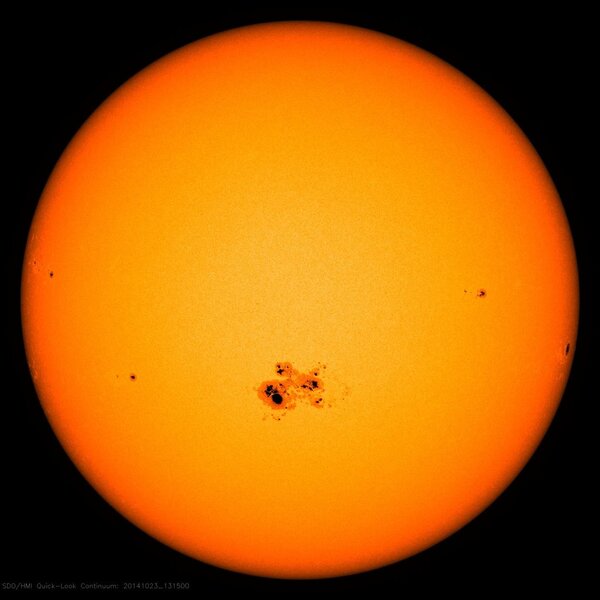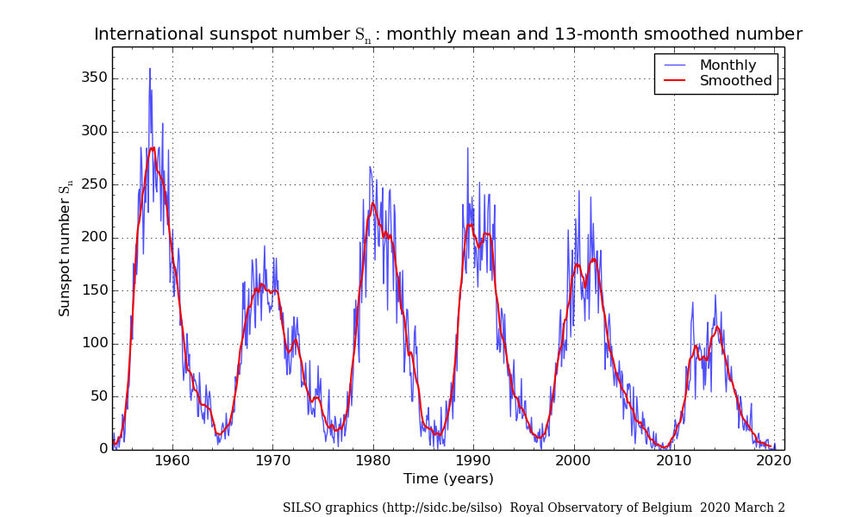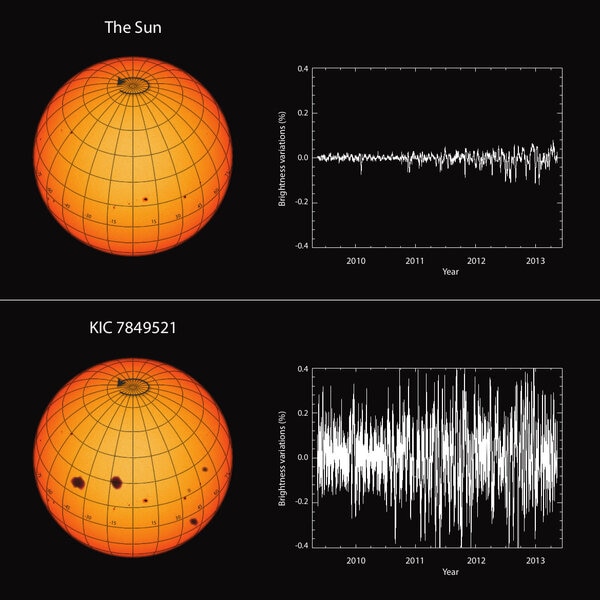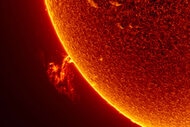Create a free profile to get unlimited access to exclusive videos, sweepstakes, and more!
Our Sun is magnetically quiet compared to other stars. But why?
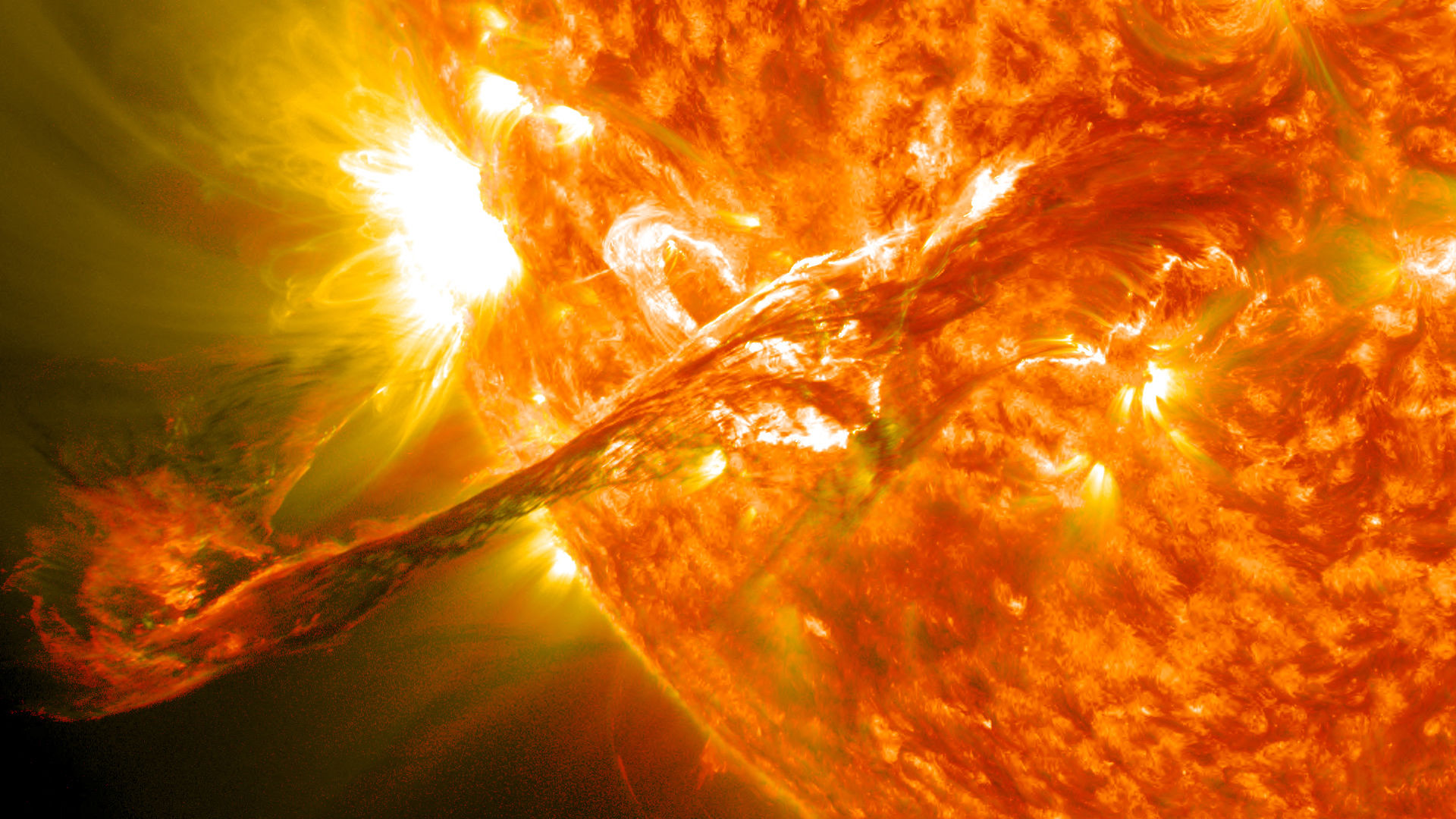
Astronomers have determined that, on average, the Sun is quieter than other stars magnetically, and it's not clear why. The long-term meaning of this finding isn't clear either, but it implies the Sun could get even more active than it is now.
Our Sun is magnetically active, meaning it has a magnetic field that sometimes strengthens enough to spit out huge and powerful storms, as well as create dark regions on the surface called sunspots. This activity directly affects us on Earth, endangering satellites in orbit, humans in space, and even our power grid on the ground. This magnetic activity is cyclical, waxing and waning every 11 years.
The motivation behind the new work is that, while we understand a lot about the Sun's magnetic field, it's important to have an idea of how it behaves compared to other stars. For example, is it more or less active compared to other stars?
That's a good question, because we don't know much about the long-term behavior of the Sun. Astronomers started counting sunspots around the first time a telescope was used to look skyward, but it wasn't until 1878 that images were good enough to start looking at their total area and position on the Sun’s face, giving us an idea of how they changed the Sun's brightness. We can do better, though; ice cores on Earth show the presence of elemental isotopes that are affected by subatomic particles zipping through space, and these particles are affected by the Sun's magnetic field. So we can use them as a proxy for solar magnetic activity going back about 9,000 years.
But that's a paltry amount compared to the billions of years a star lives. And that's why new research looked to other stars to see how they behave, to compare them to the Sun. The idea is that by looking at their brightness over long periods of time they can see the stars dimming and brightening as sunspots (well, starspots) rotate into and out of view. More magnetically active stars will change more because they have more sunspots, while quiet stars will have a more stable brightness. And the more stars they can observe the better.
For this, the scientists who did the new research turned to the Kepler observatory, which for three years stared at a single spot in space to look for exoplanets, planets orbiting other stars. It did this by taking frequent brightness measurements of 150,000 stars, looking for dips in brightness when planets passed in front of them, making mini-eclipses. And that means Kepler got a lot of brightness measurements of the stars, which is perfect for this study.
Now, stars come in many different flavors: high mass, low mass, young, old, hot, cool … so the astronomers had to cull the list to leave only stars as much like the Sun as possible, to make the comparison fair. To do this they picked stars close to the Sun's surface temperature of 5780K, chemical composition (heavy elements affect the way a star behaves), surface gravity (some stars are giants and have much lower gravity; these are inactive magnetically), and most importantly rotation.
Why rotation? The spin of a star is what powers the magnetic field. It creates what's called a dynamo inside the star, a self-powered magnetic generator. A star that spins rapidly is likely to have a much stronger magnetic field, and therefore a more aggressive sunspot cycle, so the astronomers did what they could to limit their sample to stars with rotation periods close to the Sun's of about 24.5 days.
In the end they wound up with long-term Kepler data for 365 solar-type stars. They also had a group of over 3,500 stars that were very much like the Sun but for which no rotation period was known. Then they compared the changes in those stars' brightness with the Sun's.
What they found is surprising: The Sun is much quieter than other stars like it! While the Sun's median brightness variation is 0.07%, the other stars had a median of 0.36%, five times higher! That's even twice as much as the Sun's maximum variation of 0.2%.
Why? It's not clear. There's an idea that the Sun is reaching an age where it's going through a transition to a quieter magnetic cycle as its rotation slows over the eons. The other stars like the Sun may not be quite that old yet, so are still active.
Interestingly, when they looked at the group of stars for which no rotation had been measured, they tended to be quieter, too, like the Sun. Again, it's not clear why. Remember, these are all stars very much like the Sun, but we just don't know how rapidly they spin. If the Sun were a star a few dozen light years away, we'd have a hard time measuring its rotation rate, and it would be in this sample of stars. In that case these stars may represent the kind of activity the Sun is still capable of.
That's intriguing. It's entirely possible the Sun is very active on timescales longer than 9,000 years, which is far back as we can reliably measure. Perhaps over tens or hundreds of thousands of years the Sun's activity increases quite a bit, but we have no records of it.
That's … concerning. While the timescale is long, and is probably not anything we need worry about for quite some time, it's still not comforting to think the Sun can be more active. The magnetic cycle is responsible not just for sunspots, but also for solar storms, cataclysmic eruptions of solar flares and coronal mass ejections. These have a big effect on satellites, humans in space, and even our power grid on the ground. It's very much in our interest to understand these cycles better!
This work is a great first step in understanding the Sun's long-term behavior. In the future, other space-based observatories are planned to look at stars like Kepler did, so the research can be extended, too. It's interesting to me that the observations Kepler made can be used for other kinds of science than what was originally intended, too. So much of astronomy just depends on looking up, and doing so in as many ways possible. That means there's a lot of overlap there. What else will learn as we plumb the depths of the data we collect?
